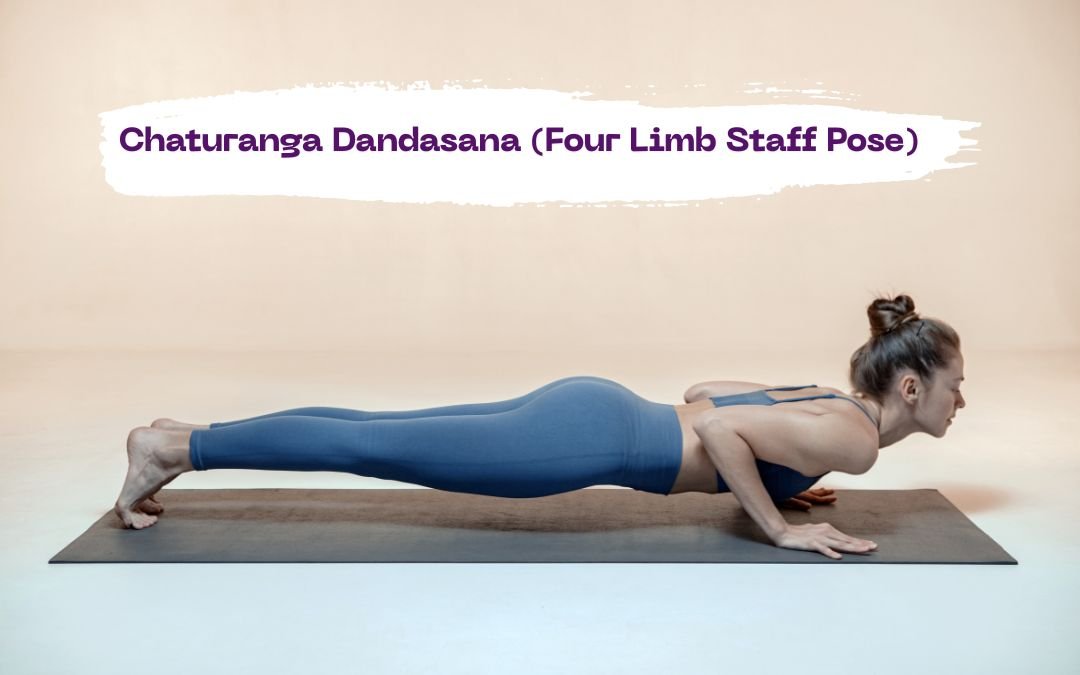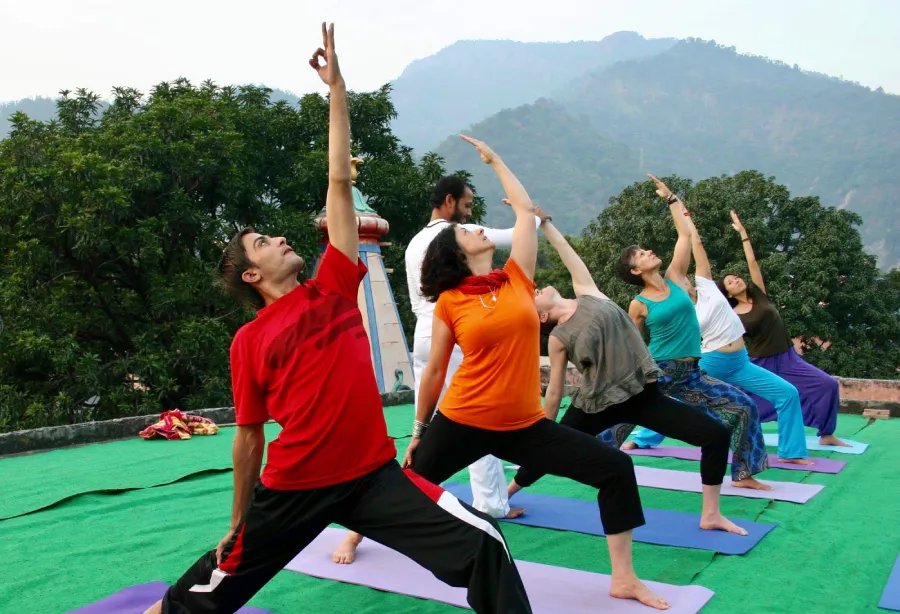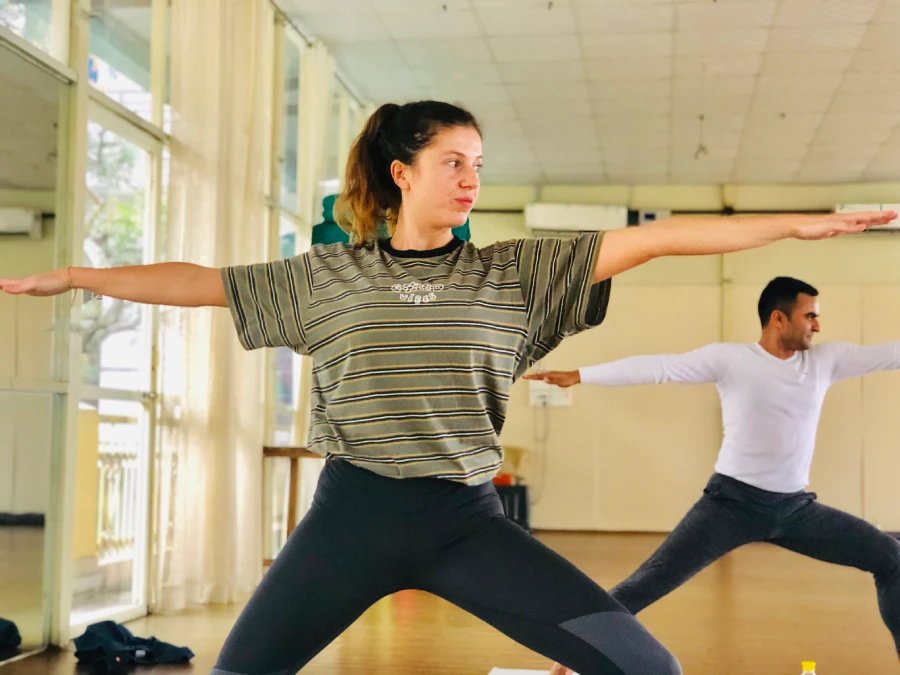Whether you are practicing Vinyasa Yoga, Ashtanga Yoga, or some Power exercise, Chaturanga Dandasana is always included. You will hear Western practitioners calling it by other names. One of them is the Four-limbed Staff Pose. You will be able to learn this asana in the yoga teacher training Rishikesh.
This is one of the easiest poses that beginners can also practice. It is a balancing pose, which you must do with your back towards the ceiling. You will be practicing it as a part of Sun salutations.
Let us, how you can practice it and then master the same. Along with the procedure, we will also give you a sneak peek into the variations, precautions, contraindications and benefits.
How To Do Chaturanga Dandasana?
- You can begin by sitting in Vajrasana.
- Slowly, walk your hands on the mat and stretch them as far as you can.
- Alongside, walk your legs backward, stretching them to their fullest capacity.
- Balance your body on the hands and toes. The elbows will be jutting outward parallel to the ground, with palms in contact with the mat. Exhale while doing this.
- The shoulders and bent elbows will be at the same level.
- You must hold the pose for 5-10 breath counts, as this is what affects the body and mind. Practice normal breathing.
- Slowly exhale and get into the full plank pose and then inhale.
- Exhale again and bend the knees and take your hands towards yourself and sit in Vajrasana.
Learn the entire process in full detail as a part of the 200 Hour yoga teacher training RIshikesh.
Tips For Beginners – Chaturanga Dandasana
- Initially, you can practice this asana, by keeping the knees in contact with the mat. As you gain finesse, you can lift the knees and keep a gap of 2-3 inches from the same.
- You must keep your abdomen’s core muscles engaged.
- Your body must be parallel to the ground.
- To ensure that you are not exerting undue pressure on any body part, you must practice a few follow-up poses. They are Adho Mukha Svanasana and Urdhwa Mukha Svanasana.
- You can use props as beginners, to help you ease into the pose. Use yoga blocks, bolsters, and yoga straps.
There are certain variations that you can learn and practice as well. Get complete information about variations as a part of the yoga teacher training Rishikesh.
Variations Of The Chaturanga Dandasana
- Double Chaturanga – You have to start with the high plank, with hips above the level of the body. Press your palms into the mat and bring the elbows till the shoulders. Thereafter, you have to move the body up again and then come down again.
- Three-legged Chaturanga – This is another pose variation, in which you can raise one of the legs off the floor. Your elbows are at 90 degrees.
- Chaturanga Dandasana Against The Wall – You can practice this against a wall, in standing position. Your fingers are pointing upward, with the palms resting on the wall. The elbows are at 90 degrees, and you have to perform push ups against the wall, like in Tricep pushups.
Contraindications and Precautions
The teachers at the best yoga schools will teach all such details and more as a part of the 200 Hour yoga teacher training Rishikesh.
- If you have any shoulder injury or hand injury, you must refrain from doing this pose.
- In later months of pregnancy you must avoid this practice.
- Those with carpal tunnel syndrome must avoid this pose.
- Always maintain correct alignment, while practicing.
- You must keep the angle of 90 degrees between your upper arm and forearms.
- If you face any sort of discomfort in your spine or shoulder, you must avoid this asana.
Benefits Of Chaturanga Dandasana
- It can strengthen the muscles and activate them as well.
- The asana also improves the posture. When you keep the body parallel to the floor, you can improve your spinal health.
- It also builds endurance.
- You can enhance your core strength.
- Your body’s flexibility also increases.
- You will also be able to respire better. The reason being that, you are working out your chest muscles as part of the asana.
- This asana, when practiced daily, can elongate the spine.
These are just a few of the benefits of Chaturanga Dandasana. Join the course at the best school to learn in an elaborate manner. Maharishi Yoga Peeth is one of the best schools to learn yoga in India.
Conclusion
You can join the 200 Hour yoga teacher training Rishikesh, so as to correct your own practice and learn professional yoga. If you are eager to teach others this ancient science, then Maharishi Yoga Peeth will be best for you. You can also get RYT 200 certification after you complete the course successfully. So, hurry and enroll today!




